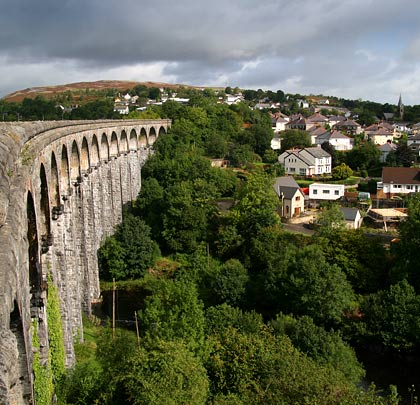The third largest in Wales, Cefn Coed Viaduct was built to carry the Brecon & Merthyr Railway over the River Taff near Merthyr Tydfil in South Wales. Designed by Alexander Sutherland and Henry Conybeare, it consists of fifteen arches, each one with a span of almost forty feet, and is 257 yards long with a maximum height of 115 feet. Described as a graceful and majestic structure, it has an impressive and elegant curve.
The designs were prepared by Alexander Sutherland and Thomas Savin and John Ward, managers of the railway company took responsibility for the build. However, they soon hit problems when the company, which had been paying a guaranteed five per cent dividend to shareholders, ran into financial problems. Sutherland stepped in to save the day, choosing an alternative route for the section.
The revised route avoided Cyfartha Castle, the property of local ironmaster, Robert Crawshay, by going down the west side of the valley, increasing the engineering complexity of the project but earning the gratitude of the influential landowner. It is alleged that a sizeable bribe eased the pain of the redesign.
A further problem hit the project when, in February 1866, stonemasons went on strike. The intention had been to build the viaduct out of limestone, like the nearby Pontsarn, which Savin, Ward, and Sutherland had also built. Instead, the company was forced to buy 800,000 bricks and employ bricklayers which is why bricks line the underneath of the arches while the rest of the structure is made of stone.
Eventually, on October 29, 1866, Mrs Sutherland was able to lay the final stone and the viaduct was declared open. It had cost £25,000 to build and was used until the line was closed to passengers in 1961 and the last goods train trundelled over it on August 1, 1966. It has since been renovated and now forms part of the Taff Trail walking and cycling route.

